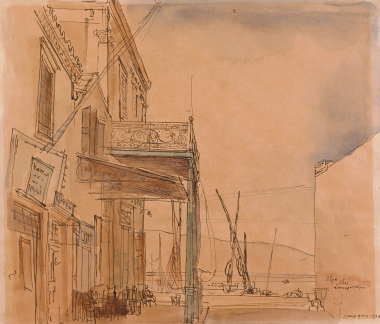Erotiko, 1989

The leading Greek painter Yannis Moralis was one of the most important artists who gave expression to the hellenocentric modernism which took shape in Greece in the 1930s and which continued after the Second World War to be a subject for thought and exploration for many Greek creative artists. With a profound knowledge of ancient Greek civilisation which he acquired from his father, a classical scholar, and total acceptance of the models of the European avant-garde, with which he became acquainted in Rome and Paris during the course of his studies (from 1937 to 1939), he created an oeuvre in which the human form and its destiny occupy a predominant place. Devoted to the female body and the eternal man – woman relationship, after his return from Paris, he depicted with unique consistency, but following a course which was constantly evolving, girls at the peak of their erotic ripeness, and young couples in their solitary moments. With the question of Love and Death, of the Eternal and the Corruptible always strongly felt within him, he produced monumental figures which draw upon ancient funerary columns, as they stand silent, solitary in their concentration. Whether he uses a tonal modelling – as he did at the beginning of his career – for the rendering of sensuous flesh, or encloses its bulk, within a simple outline, in carefully-drawn geometrical units which become increasingly abstract, his figures are equally hieratic, spiritual, symbolic – but also tender, dream-like, and serene. By means of a wealth of warm colours in strictly simple compositions, Moralis, from the earliest years of his artistic career, matched the humanist education which he received from his family with the power of expression of colour which he got to know in Paris, through the works of the Fauvists, and particularly of Derain, with a tendency from the very first towards the classical ideal which seeks balance between reflection and passion, lyricism and the profound inner processes which go back to the idea.





